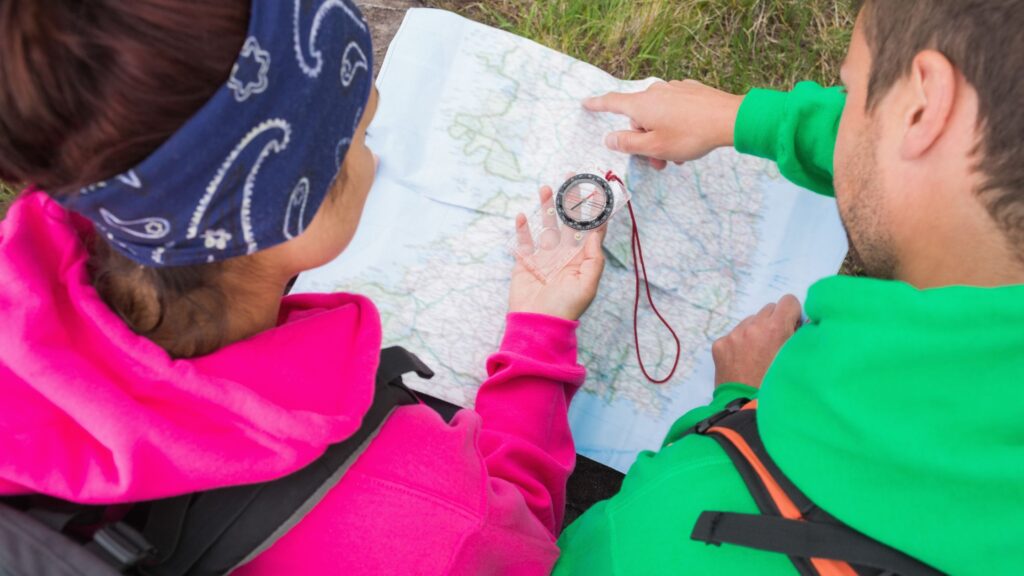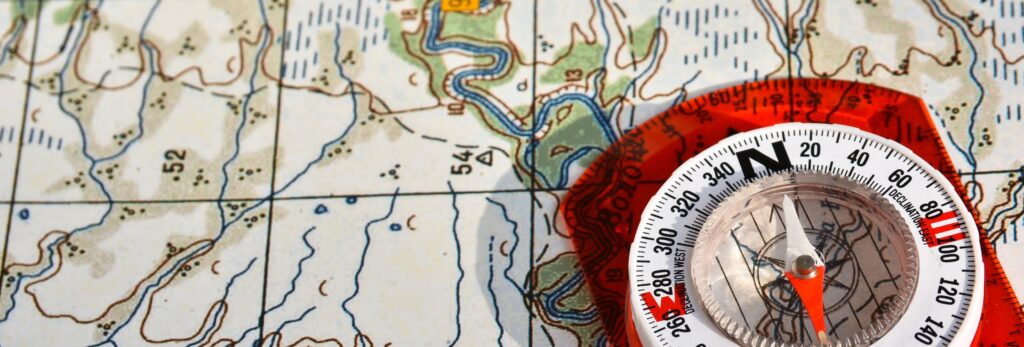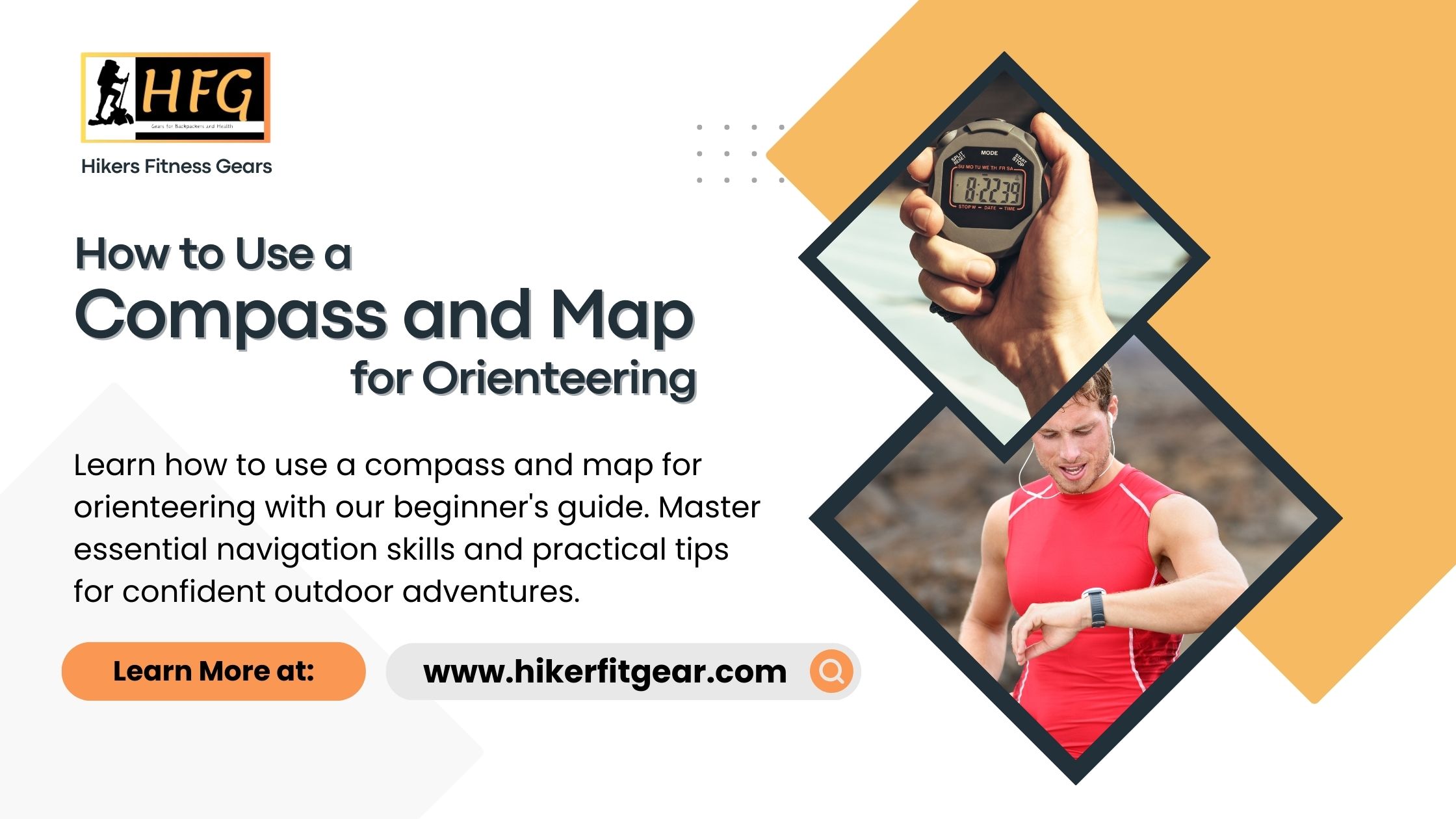How to Use a Compass and Map for Orienteering
Introduction
How to Use a Compass and Map for Orienteering is a fundamental skill for anyone interested in navigating through unfamiliar terrains with confidence. Orienteering combines physical endurance with mental strategy, requiring participants to use a compass and map to find specific points in the landscape. This guide will introduce you to the basic techniques of using these essential tools, setting you on the path to becoming proficient in orienteering.
Table of Contents
Orienteering is an outdoor adventure sport that combines navigation and running, where participants use a map and a compass to navigate from point to point in diverse and usually unfamiliar terrain. Mastering the use of a compass and map is essential for successful orienteering, enhancing both the challenge and enjoyment of the sport. In this guide, we’ll walk you through the fundamental skills needed to effectively use a compass and map for orienteering.
What This Post Covers
This post will cover the basics of orienteering, including an overview of essential equipment, step-by-step instructions on how to use a compass and map, and practical tips for improving your navigation skills. By the end of this post, you’ll have a solid understanding of how to navigate through the wilderness with confidence.

What is Orienteering?
Orienteering is a sport where participants use a map and compass to navigate through a course with set control points. The objective is to complete the course in the shortest possible time, visiting each control point in the correct order. Orienteering can take place in various environments, from forests and mountains to urban settings.
What Does Orienteering Involve?
Key Aspects of Orienteering:
- Map Reading: Understanding the symbols, scale, and terrain features on an orienteering map.
- Compass Use: Using a compass to take bearings, orient the map, and navigate accurately.
- Route Planning: Deciding on the best path between control points.
- Terrain Interpretation: Reading the landscape to match it with map features.
- Control Points: Identifying and locating specific points marked on the map.
Why is Learning Orienteering Important?
Benefits of Orienteering:
- Improved Navigation Skills: Enhances your ability to navigate unfamiliar terrain.
- Physical Fitness: Combines physical exercise with mental challenge.
- Adventure and Exploration: Encourages exploration of new areas and outdoor adventure.
- Self-Reliance: Builds confidence in your ability to navigate without electronic devices.
- Problem-Solving: Develops quick thinking and decision-making skills.
Compass and Map for Orienteering
How to Use a Compass and Map for Orienteering involves several critical steps, starting with understanding the map symbols and scale, and properly orienting the map to the terrain. You will learn how to take and follow bearings accurately, interpret terrain features, and plan efficient routes between control points. Practical tips such as thumbing the map, using handrails, and pace counting will also be discussed to enhance your navigation skills and ensure a successful orienteering experience.
Equipment Needed for Orienteering:
- Orienteering Map: A detailed map with topographical features and control points.
- Compass: A baseplate orienteering compass is most commonly used.
- Clothing and Footwear: Appropriate for the terrain and weather conditions.
Steps to Use a Compass and Map:
- Orient the Map: Place the map flat and align it with the terrain using identifiable landmarks. Rotate the map until it matches the direction of the north as indicated by the compass.
- Take a Bearing:
- Identify your current location and your next destination (control point) on the map.
- Place the compass on the map so that the edge lines up with both points.
- Rotate the compass housing until the orienting lines align with the north-south grid lines on the map.
- Read the bearing at the index line.
- Follow the Bearing:
- Hold the compass flat in front of you with the direction-of-travel arrow pointing straight ahead.
- Turn your body until the magnetic needle aligns with the orienting arrow in the compass housing.
- Follow the direction-of-travel arrow, using the terrain and landmarks to guide you.
Practical Tips for Orienteering:
- Practice Map Reading: Familiarize yourself with the map symbols and scale.
- Check Your Bearing Regularly: Ensure you are staying on course.
- Use Handrails: Features like paths, rivers, and fences can help guide you.
- Thumbing the Map: Keep your thumb on your current location on the map as you move.
- Pace Counting: Estimate distances by counting your steps.
Why is Using a Compass and Map Different from GPS?
Using a compass and map requires more skill and awareness of your surroundings compared to GPS, which provides real-time location data. This traditional method encourages a deeper understanding of navigation principles, terrain interpretation, and self-reliance.
Things to Look Out for When Orienteering
Key Considerations:
- Accuracy: Ensure your compass is properly calibrated and your map is up-to-date.
- Visibility: Weather and light conditions can affect your ability to read the map and see landmarks.
- Terrain Hazards: Be aware of potential hazards like cliffs, rivers, and dense vegetation.
- Physical Condition: Be prepared for the physical demands of orienteering.
- Safety: Always inform someone of your plans and carry essential safety gear.

Conclusion
Mastering the use of a compass and map for orienteering opens up a world of adventure and enhances your navigation skills. By understanding the basics of map reading, compass use, and route planning, you can confidently navigate through any terrain. Remember to practice regularly and build your skills gradually.
Frequently Asked Questions
Q1: What is the best type of compass for orienteering?
A: A baseplate orienteering compass is ideal due to its simplicity and accuracy.
Q2: How do I improve my map-reading skills?
A: Practice regularly, study different types of maps, and participate in orienteering events.
Q3: Can I use a GPS device in orienteering?
A: While traditional orienteering relies on a compass and map, some modern events allow GPS for training purposes.
Q4: What should I do if I get lost?
A: Stop, try to identify your location using the map, and backtrack to a known point if necessary. Always carry a whistle and emergency supplies.
Q5: Are there different types of orienteering?
A: Yes, including foot orienteering, mountain bike orienteering, ski orienteering, and trail orienteering, each with its own specific equipment and techniques.

My name is Oje and I’m obsessed with finding the latest tech gear to help people track progress and solve problems more efficiently. I spend countless hours researching and testing innovative apps, wearables, and devices for fitness, health, productivity, and more.
